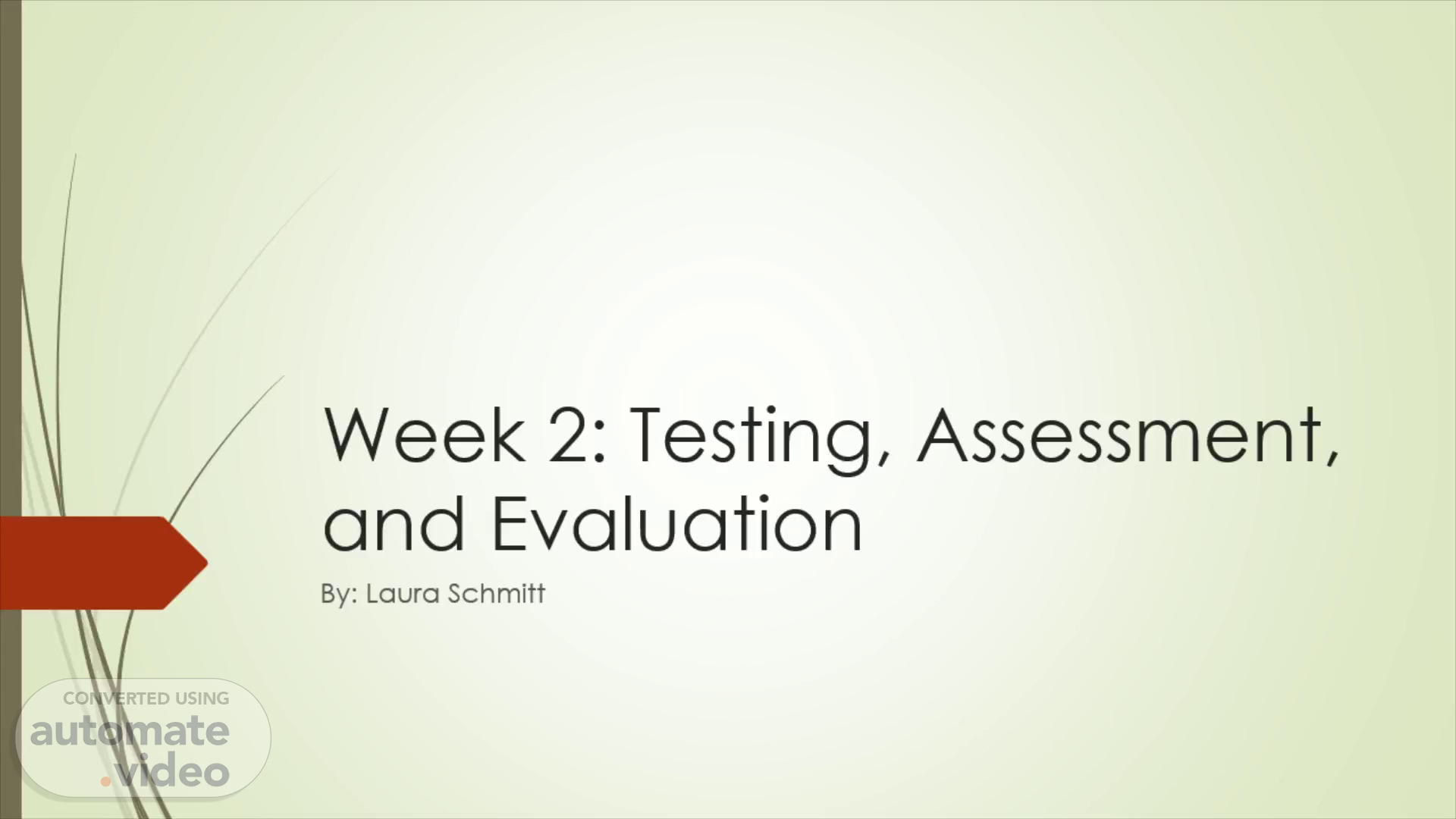
Page 1 (0s)
Week 2: Testing, Assessment, and Evaluation. By: Laura Schmitt.
Page 2 (8s)
Testing. Tests: - A test is considered a product or a tool that is measuring student’s knowledge or their ability to complete a task..
Page 3 (1m 18s)
Assessments.
Page 4 (3m 7s)
Evaluation:. According to Hidla (2005), “Evaluation is essentially a procedure for getting evidence to determine whether a given activity or program has produced certain educational effects.”.
Page 5 (4m 17s)
Formative Assessments:. Formative assessment is a way to monitor students learning to be able to provide feedback that is going to help students improve their learning and teachers improve their learning. Examples: Student conferences Student Observation Student drafts Self check quizzes Exit slips Sousa (2015) states ” When teachers and students use the assessment results to improve instruction, the assessment in formative.” (Pg.810).
Page 6 (6m 4s)
Summative Assessments:. This is the process of evaluating students' knowledge at the end of an instructional unit by comparing against standards and curriculum guides. They are high stake which means they have a high point value. Examples: Unit test Midterms Final Papers Performances Projects.
Page 7 (7m 21s)
Assessing for Achievement, Performance, and Proficiency.
Page 8 (8m 58s)
Brain Friendly Assessments:. According to Sousa (2015), “ a brain friendly assessment is any assessment device designed and administered by one who has a thorough understanding of how the brain acquires, evaluates, and stores information, as well as the various variables that affect human learning, recall. And performance.” (150) Examples: Pop quiz Choice Learning by practice.
Page 9 (10m 25s)
References:. Caffrey, J. (2015, January 23). The purpose of assessment . YouTube. Retrieved September 18, 2022, from https:// www.youtube.com / watch?v =LvR72wHVcjw&feature= emb_imp_woyt lbeck , M., & Bacon, D. (2015). Toward universal definitions for direct and indirect assessment. Journal of Education for Business, 90 (5), 278-283. Sousa , D. A. (205AD). Why, Who, and What We Assess . In Brain Friendly Assessment: What They are and How They Use Them (pp. 357–736). essay, Learning Science International . Taba , H. (2005). What Is Evaluation up to and up against in Intergroup Education? Journal of Curriculum & Supervision , 20 (3), 257–261 5 - Types of Assessment . (2014). Creative Commons Attribution License . Retrieved September 12, 2022, from https:// www.youtube.com / watch?v =aEHhrAu3ShY&t=1s..